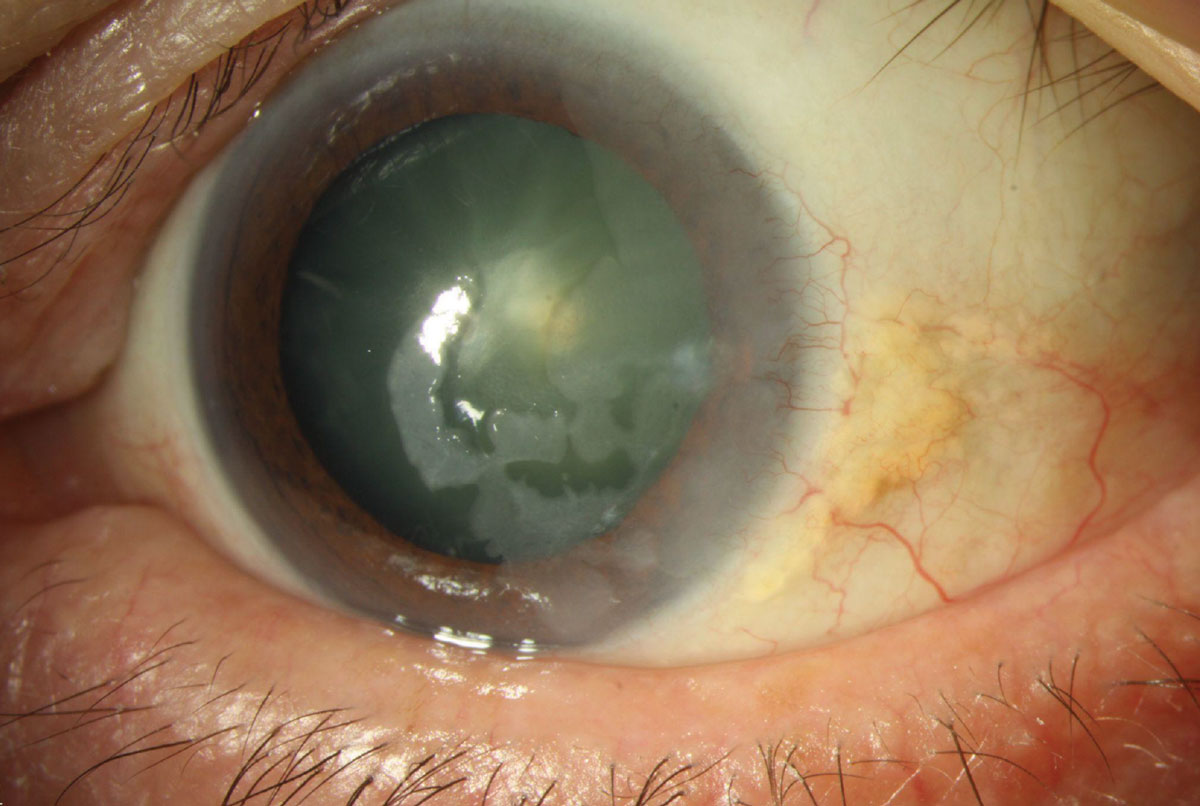 |
|
With a better understanding of OSSN, ODs can identify and treat the condition earlier for more favorable outcomes. Photo: Paul Hammond, OD. Click image to enlarge. |
Ocular surface squamous neoplasia (OSSN) results from abnormal growth of atypical squamous epithelial cells in the conjunctival, limbal and corneal epithelium. Incidence rates of the condition vary globally depending on geography, with a higher prevalence reported in the southern hemisphere. Risk factors include older age, ultraviolet light exposure, fair skin pigmentation and immunocompromised status. Researchers recently evaluated a region in New Zealand with one of the highest reported incidence rates of OSSN in the hopes of applying their findings globally to better understand the condition’s pathophysiology and amenability to treatment.
The review included all patients who presented with pterygium or conjunctival lesions in the region in 2020. Patients were on average 69.4 years of age, predominantly male (78%) and of New Zealand-European ethnicity (89%). Eighty-eight percent of all excised conjunctival and corneal specimens were sent for histopathologic examination. The primary outcome measure was the incidence of OSSN.
Of the 185 excised lesions sent for histopathological assessment, 18 (10%) were reported as OSSN. The OSSN annual incidence was 3.67 per 100,000 per year. Histology grades included conjunctival intraepithelial neoplasia (CIN)-I (25%), CIN-II (25%), CIN-III (12.5%), carcinoma in situ (25%) and invasive squamous cell carcinoma (12.5%). One patient with invasive squamous cell carcinoma required exenteration.
“OSSN typically responds well to treatment, and the mortality rate is very low when the disease is identified early,” the study authors concluded in their paper. “Delays in diagnosis or treatment can lead to preventable loss of vision and the need for more aggressive treatment including exenteration. Routine histological analysis of all conjunctival specimens is important to accurately diagnose, treat and monitor OSSN.”
Rossain RR, Oh JA, McLintock C, et al. Ocular surface squamous neoplasia: a 12-month prospective evaluation of incidence in Waikato, New Zealand. Eye (Lond). 2022;36(8):1567-70. |


